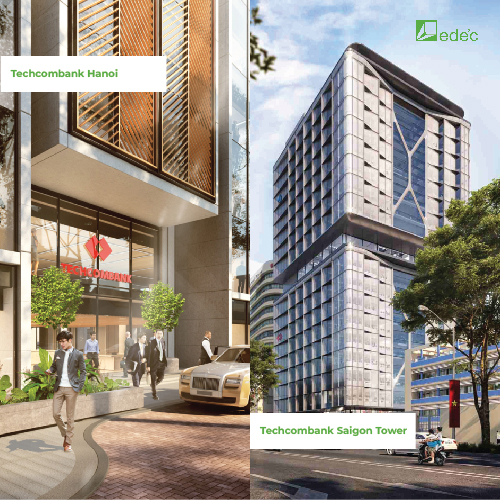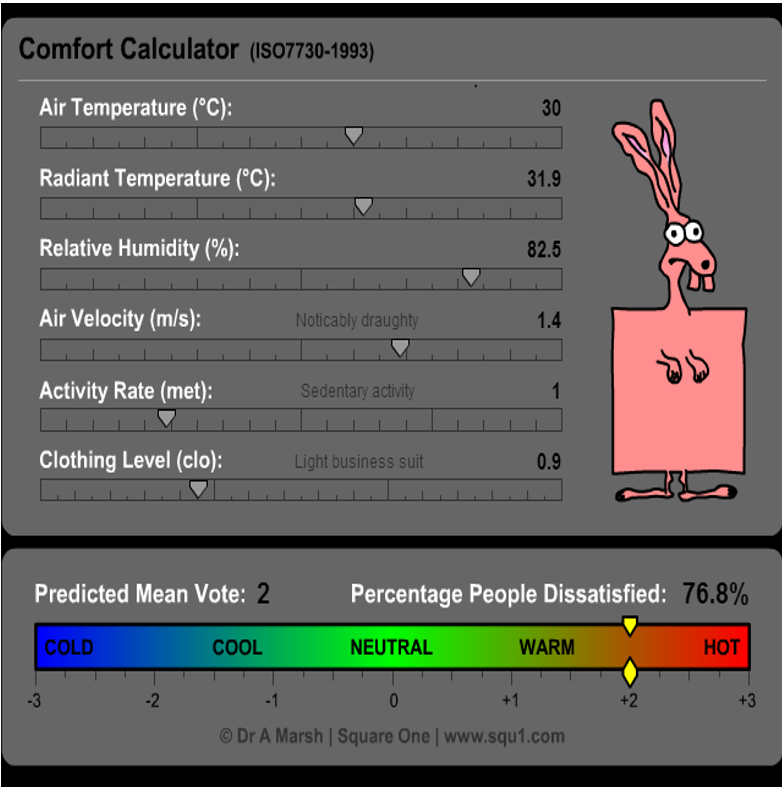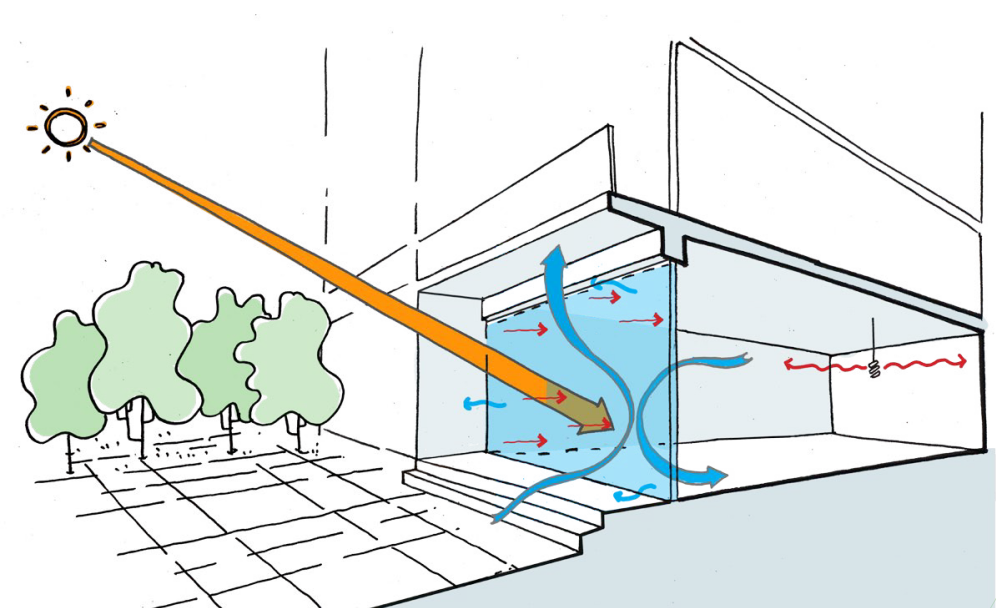RESOURCES
(Part 2) Designing Energy Efficient Buildings Without Increasing Costs

After part 1 – Energy-saving design of buildings without increasing costs, expert Tran Thanh Vu continues to share another equally important design method: “Selection of Equipment & Materials to Save Energy ” – Part 2.
Optimizing lighting systems & equipment
Lighting accounts for about 10 – 20% of a building’s energy in a typical proportion. In addition to making the most of daylight, project engineers also need to consider applying energy optimization solutions for lighting systems & equipment such as using LED lights, in combination with reducing light intensity. lights when there is natural light.
Using LEDs
Light-emitting diode (LED) technology uses less energy than traditional light bulbs because they provide large lumens of light (luminescence) with little power consumption. LED bulbs that used to produce only cool white light can now provide full-color light, which can have a “warm” light that looks as natural as an incandescent but emits less heat than traditional lights (reducing pressure on the air conditioning system) and generally have a longer lifespan.

Currently, LED lights have become very popular, so the installation is common and much simpler. However, the lighting design work in Vietnam only focuses on artificial lighting design but forgets the harmonious combination between natural lighting and artificial lighting. The coordination aims to improve the efficiency of electricity use and increase comfort and positive mood for users when regularly exposed to natural light.
For example, well-designed anti-glare areas can completely turn off lights or reduce lighting intensity when there is enough natural light. This requires predicting the natural lighting and then separating the individually controlled light paths for the daylight areas.
Well designed using LED lights in combination with natural lighting, both help to reduce the use of lighting electricity and at the same time reduces electricity consumption on the air conditioning system due to the reduction of heat from the lighting system, but most importantly, create a positive mood for the user, helping to increase labor productivity.
Energy-saving glass and sunshade elements
With a special coating on the glass surface to help block radiant heat energy from the sun, the energy-saving glass will help reduce building energy consumption and increase thermal comfort by reducing the feeling of being hit by the heat when sitting near the glass, especially by the hot heat flow of summer.
In addition to increasing thermal comfort through the choice of energy-saving glass, the Investor can also save on investment costs in the air conditioning system, and at the same time reduce energy use for the air conditioning system while still ensuring effective cooling or keeping warm inside the building depending on the climatic conditions of each region.

Energy-saving LOW-E glass components
There are many types of glass on the market that aim to save energy, increase thermal comfort, even increase visual comfort, and reduce noise… How to choose glass is a technical issue that requires expertise. In-depth analysis of energy, thermal comfort, lighting, air conditioning system costs, building operating costs…
Unfortunately, the design process in Vietnam is ignoring this issue, the design process and control are very simple compared to common standards in the world.
Current status of glass selection in building design in Vietnam
In Vietnam, many design and air conditioning cases are calculated and designed specifically based on experience, not related to the glass or the thermal quality of the building envelope. The type of glass will be selected later at the stage of material procurement, and bidding, even at this stage many investors are only interested in the color and mechanical index of the glass, ignoring the heat and light factors. …
This approach has many potential risks of increasing construction costs, but still does not guarantee thermal comfort and easily leads to wasted energy use in the long run. Inadvertently causing a “macro” burden when increasing the need to build more power plants, increasing CO2 emissions (1kWh ~ 0.81 kg CO2), increasing fine dust content in the air, increasing the number of imported goods ( air conditioning equipment)…
Example of choosing energy-saving glass for optimal distribution of investment costs:
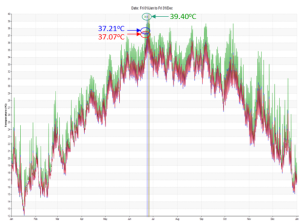
With 3 different types of glass, the temperature in the non-air-conditioned room will be different

Realistic hotel operation simulation for 1 room survey graph.
The image above is the result of a survey of a hotel room that is rarely used during the day, only used from evening to morning. With air conditioning, the temperature fluctuates from 24.4 to 25.8°C in summer. The temperature difference in the room is 2.4°C at the highest temperature when using 2 different types of glass (when the guest is away and the air conditioner is off).
With these two types of glass, the difference in operating cost of the hotel is about 840 million VND/year (410-room-hotel). The payback period is just over 1 year, due to better glass will help reduce investment costs for air conditioning systems, transformers, generators, pipes, and wires, reduce energy use, and improve thermal comfort…
Of course, when designing the air conditioning system according to the simplified method, even according to experience, the air conditioning system will be designed larger than when fully taking into account the factors related to heat and energy (balcony, sunshade, Low-E glass), will lead to increased costs for the air conditioning system and related systems.
Building materials help save energy
Materials play an important role in saving building energy, especially materials used for building envelopes such as walls and roofs. Walls, floors, and roofs are heat transfer sites, and at the same time have the effect of accumulating heat, creating a delay in temperature changes to external weather fluctuations. Without good control and selection of materials, a huge amount of energy will be wasted on heating and cooling.
Environmentally friendly building materials have many advantages such as reducing the load of beams and foundations, sound insulation, good heat insulation, and energy-saving. AAC autoclaved concrete bricks were once a reasonable choice, but in practice, they can cause seepage and crack, so they are now less popular.
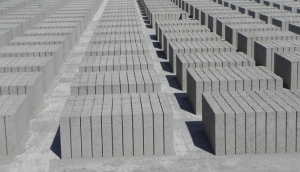
The reason is that AAC bricks have many internal pores that are easy to absorb and retain water. Currently, a few companies like Neotech have researched to produce Neotech bricks, the composition is similar to AAC but the voids are filled with light particles, so there is no risk of absorption like traditional AAC.
It is completely possible to apply the above AAC brick for high-rise buildings to help speed construction, reduce structural costs, enhance sound and heat insulation, etc. with a lower overall cost to completion than using common red brick. through and there is no risk of absorbent leading to cracking.
Epilogue
Energy-efficient materials and equipment are important components that need detailed consideration when designing energy-efficient buildings. Design solutions will all be subject to energy and heat impacts when choosing different materials and equipment.
One thing to remember is if it is carefully calculated in terms of costs, efficiency and payback before deciding to deploy, the Investor can completely save investment costs (construction components) related to heat and energy by up to 40%.
Register to receive advice from EDEEC’s team of Vietnam’s leading experts right away to save the initial investment cost for your project.
We invite you to read the next part! [ Part 3 ]
Tran Thanh Vu – Edeec Founder & Energy Efficient Building Design Specialist


